Part 63: Okinawa: May 14, 1945

The battle for Okinawa has been bloody and protracted. We've made a disappointing amount of progress here, and we'll need to really push hard in these few weeks if we want to take control of the island and prepare for the final stage of the war this year.
Allied Turn 14 (USA): May 14, 1945
Fair (Dry)
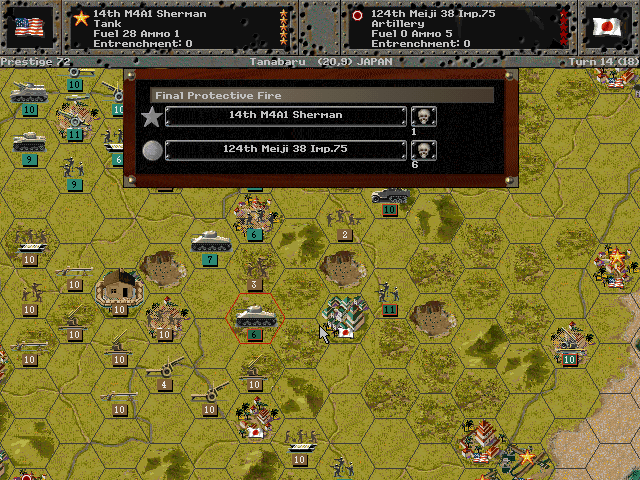
In the center, we cut off more troops.
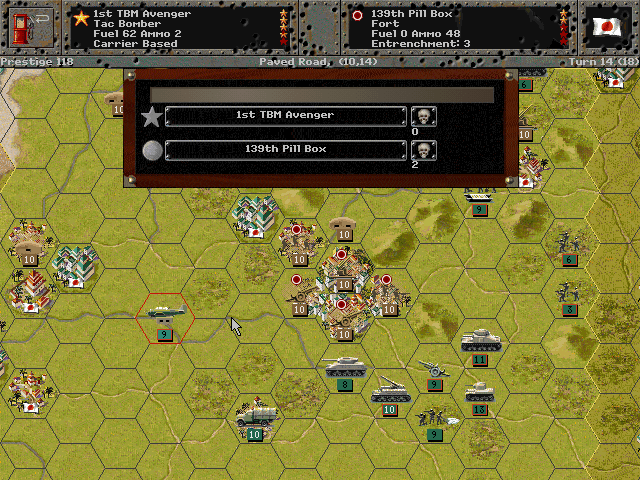
We set up for an attack on Shuri and circle around so that we can also scout Naha.
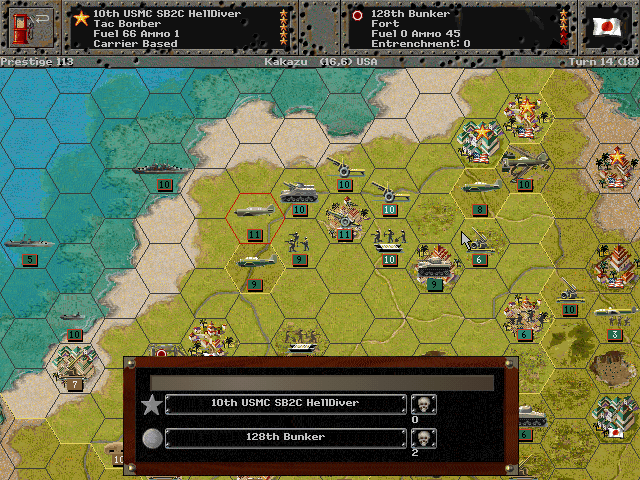
Air strikes finish off one of the bunkers blocking the road to Machinato.
Axis Turn 14 (Japan): May 14, 1945
Fair (Dry)
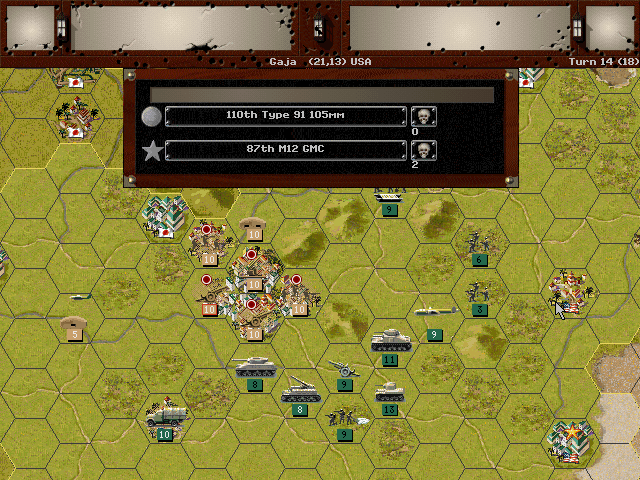
As we get even closer to Shuri, the artillery fire gets a little more accurate.
Allied Turn 15 (USA): May 17, 1945
Fair (Dry)
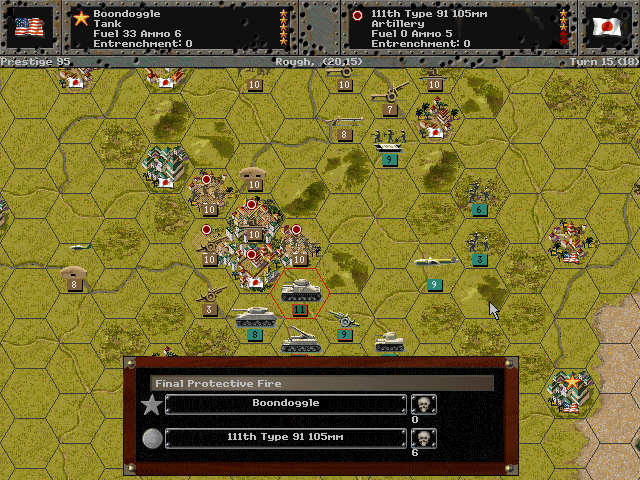
Shuri seems to be falling apart more quickly than the initial line.
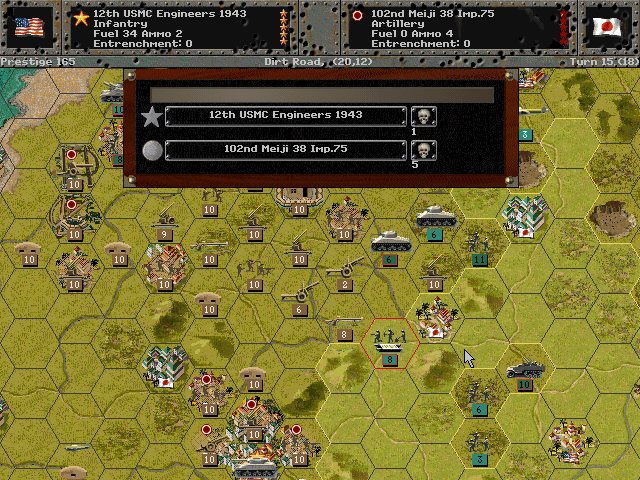
We're reducing the units in the center, but there are still a lot of them to work through.
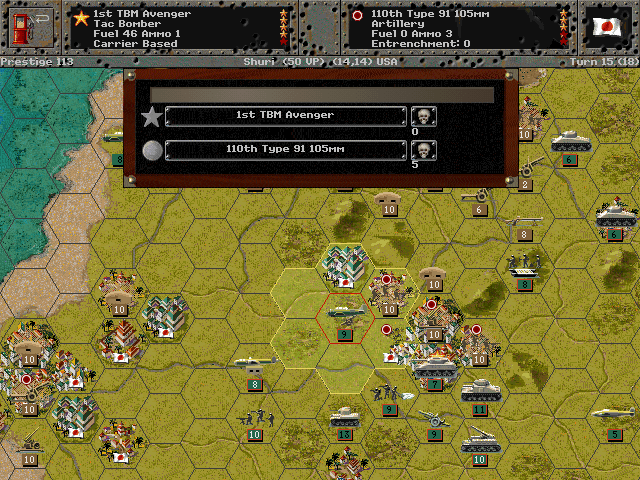
Although the flak is heavy, we send in air raids to soften up the opposition anyway.
Axis Turn 15 (Japan): May 17, 1945
Fair (Dry)
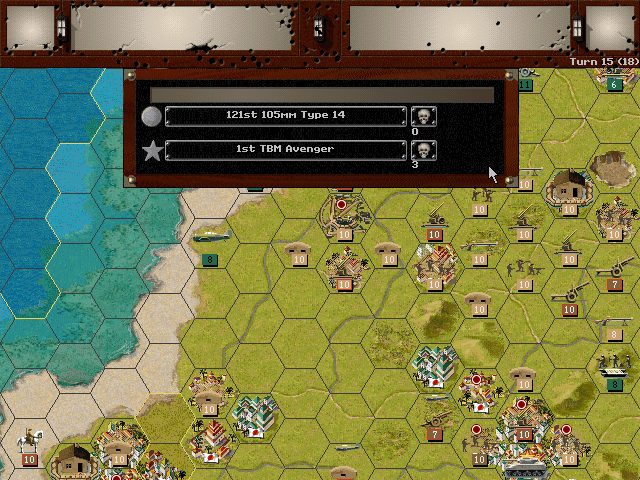
As expected, the planes take losses. But we need to take the objective.
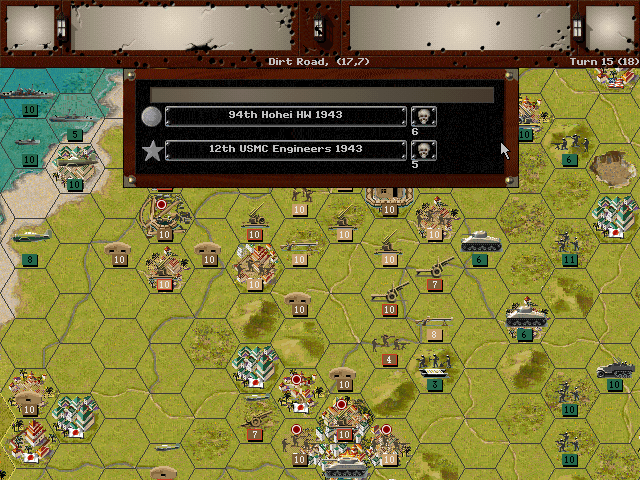
It's still a bloody struggle in the middle.
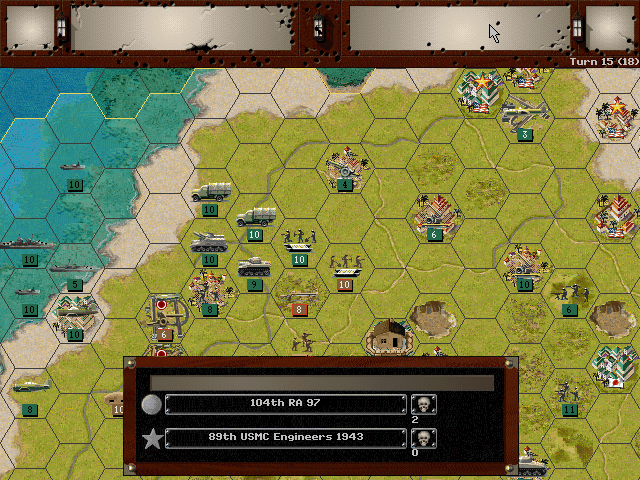
Our force heading to Machinato gets hit from the left.
Allied Turn 16 (USA): May 20, 1945
Fair (Dry)
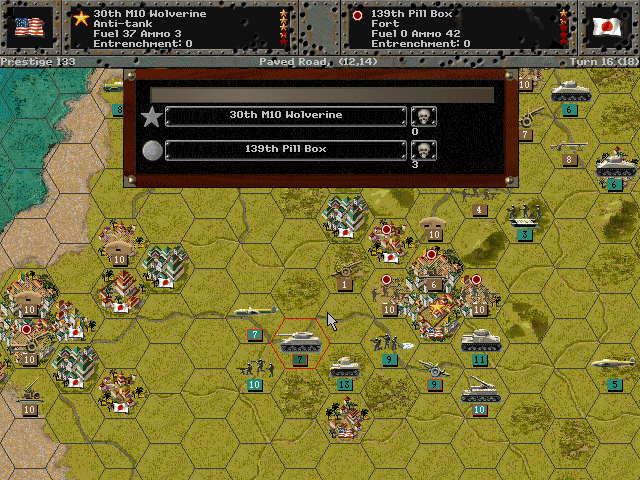
We do open the road to Naha, but the town itself still has a number of defenders.
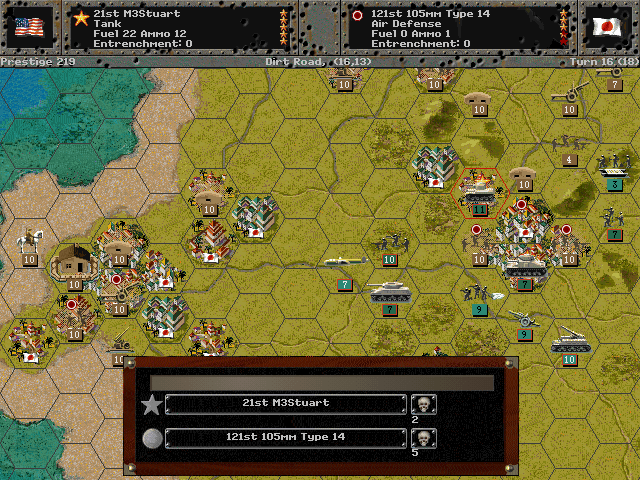
Shuri is subdued, but hasn't quite surrendered entirely.
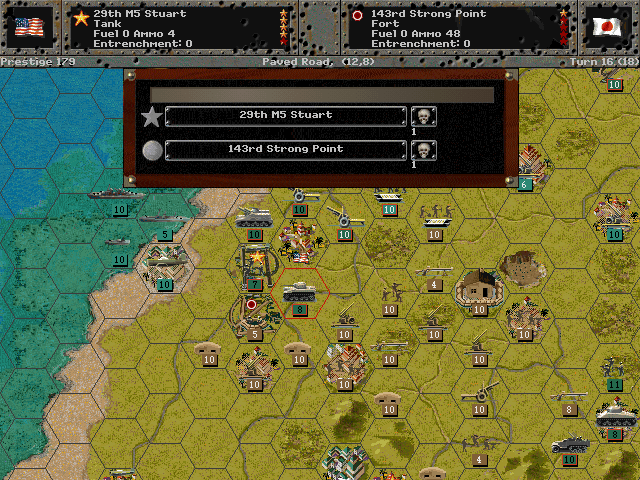
Machinato is a well-defended spot. We do take the airfield, however.
Axis Turn 16 (Japan): May 20, 1945
Fair (Dry)
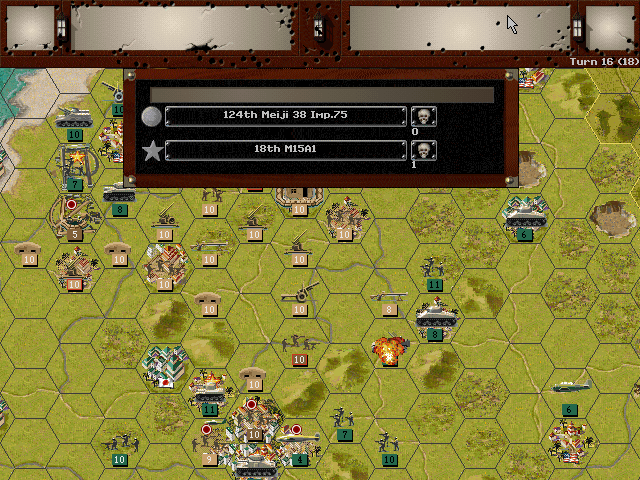
There's a bit of fighting in the center.
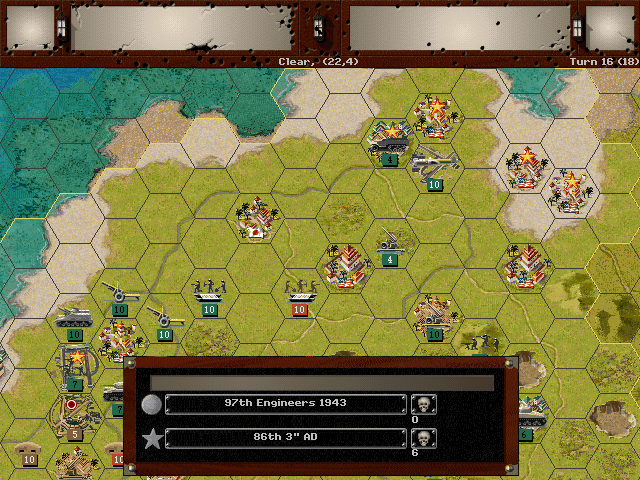
Our rapid push on Machinato left us vulnerable in the rear. Kakazu just refuses to give up.
Allied Turn 17 (USA): May 23, 1945
Fair (Dry)
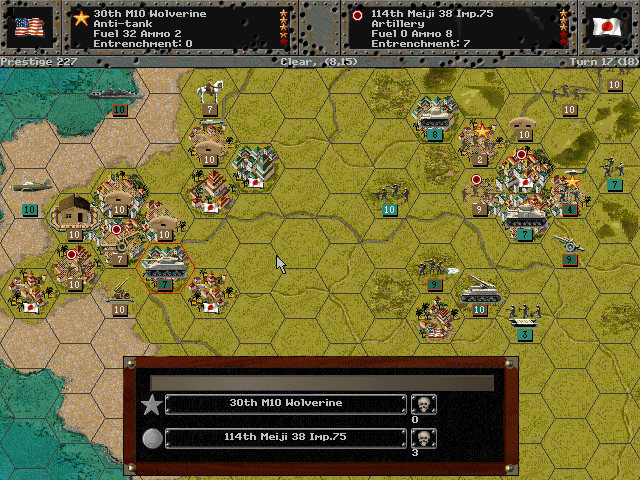
Some M10's manage to make it into Naha.
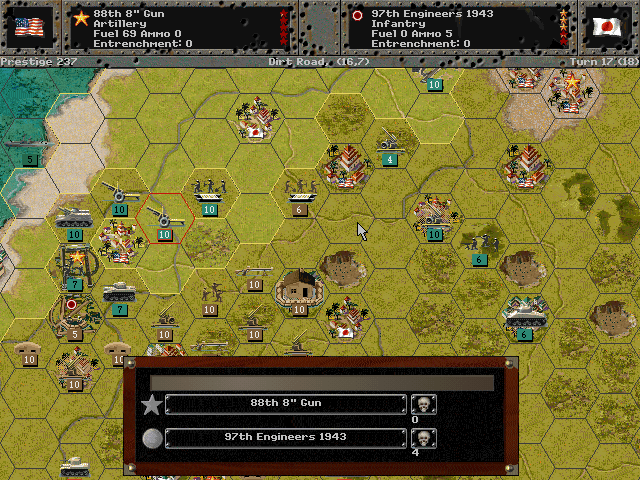
We do our best to control the enemy in the center.
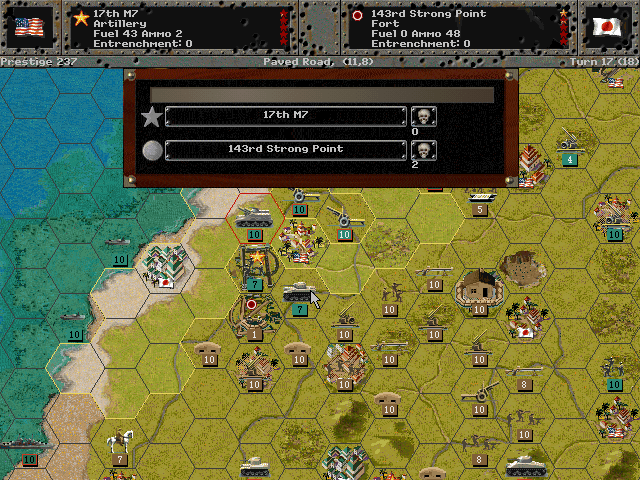
Artillery weakens Machinato.
Axis Turn 17 (Japan): May 23, 1945
Fair (Dry)
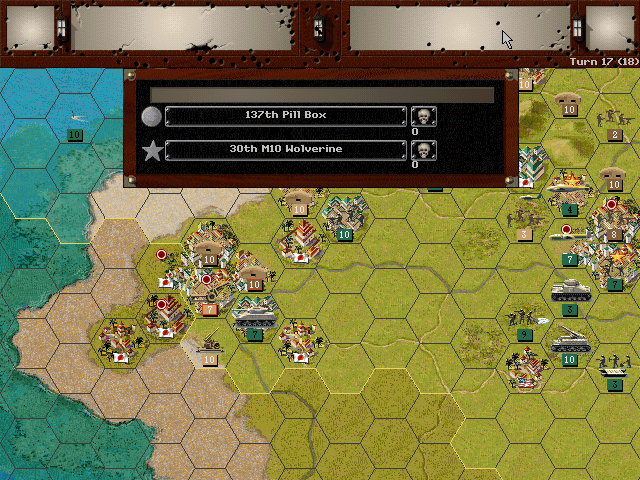
The defenses in Naha fail to drive back our mobile guns.
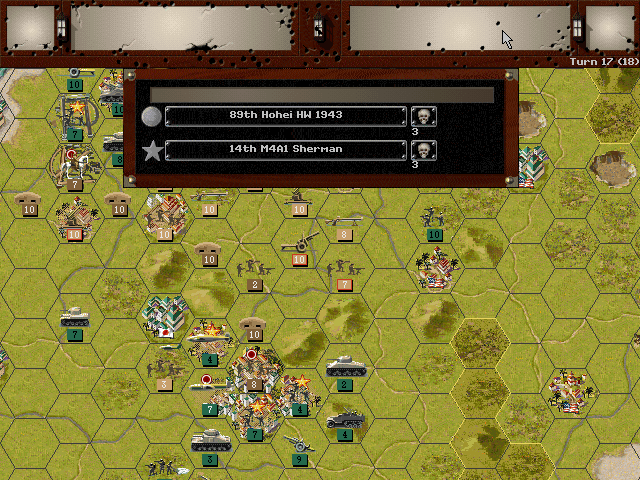
Some tanks at Shuri get into a fight in the village and are forced to pull back.
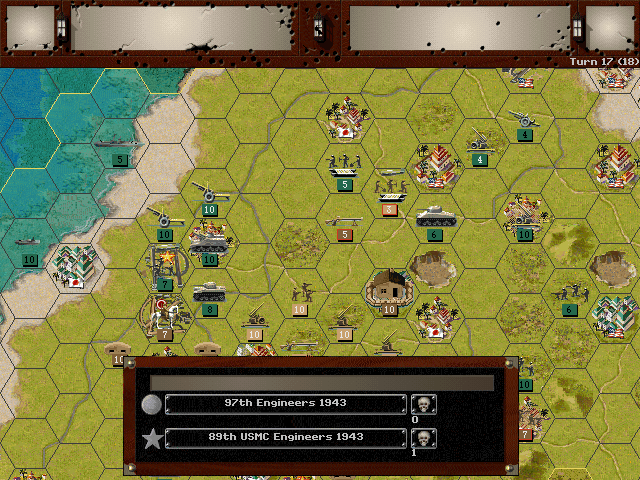
On the west side of the island, the enemy makes no further progress.
Allied Turn 18 (USA): May 26, 1945
Fair, Dry
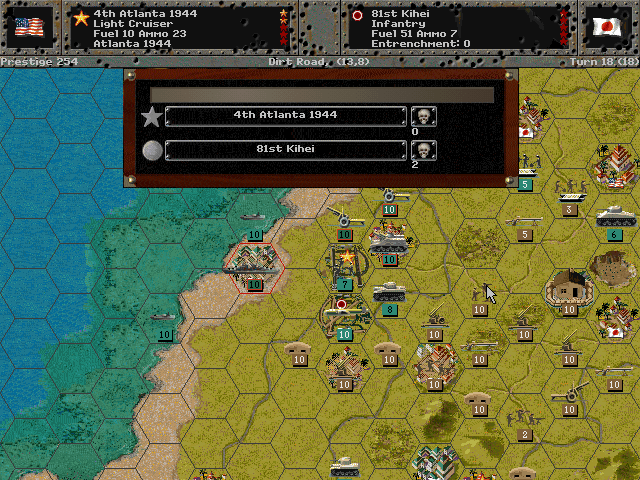
Naval support assists with the capture of Machinato.
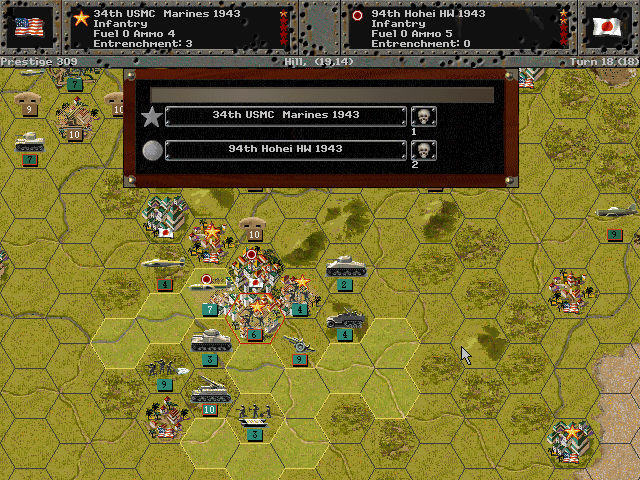
The exhausted Marines finally clear out Shuri and capture the old castle.

Our forces have nearly linked up. Naha may not have fallen, but we're just about to trap most of the Japanese troops on the island.
Axis Turn 18 (Japan): May 26, 1945
Fair (Dry)

The bunkers around Machinato can't hold out for much longer.
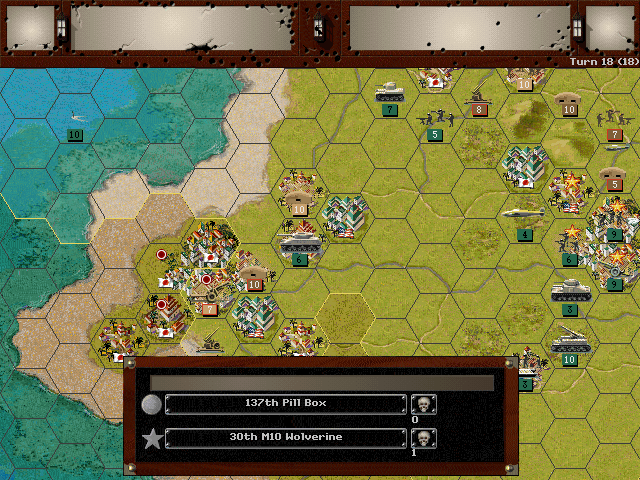
Naha isn't going to drive us out, but we will surely need more than a few Wolverines to capture it.
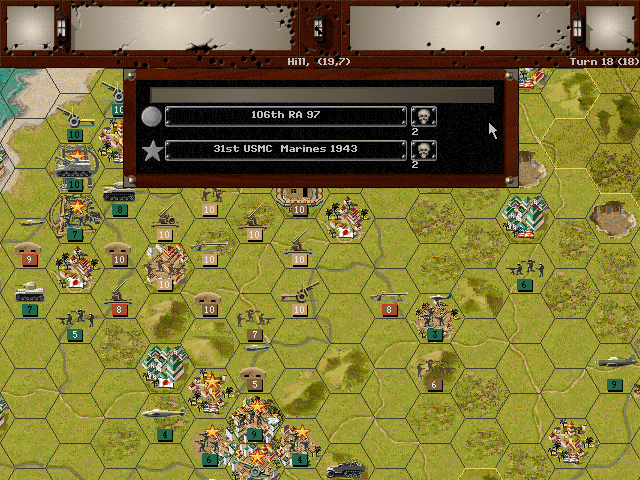
Even if the battle is clearly in our favor, there are still many Japanese soldiers willing to go down fighting.
Result: Decisive Victory (2926-1036)
Ending Prestige: 3179
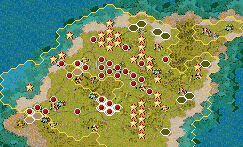
Unit Spotlight
M18 GMC 'Hellcat'
PG Name: M18 Hellcat Type: Anti-Tank
Effective Date: 7/45
Value:10 Cost:108 Spot:1 Move:8 MM:Track Trans:Naval Fuel: 42
Init:10 SA:9 HA:15 AA:[2] NA:0 GD:7 AD:8 CD:2 TT:Hard Ammo:6
Unlike many other AFVs on the American side, the M18 was for once not based on any existing tank chassis, but was instead a ground-up design as a tank destroyer. Initially intended to use a 57mm cannon, it eventually was given a 76mm gun that put it on par with the M10. Owing to its specialized design, it was lighter and much faster than any comparable unit in the field. Although it had even less armor than a light tank, it was generally intended to fire and change position as quickly as possible, and could survive battles by not being hit in the first place.
The introduction date is odd, as these were definitely available in the Pacific, and deployed even in China; in fact, by the end of 1944 the production run had already completed.
In-game analysis: Faster than an M10, but weaker defensively. I find these just a bit too expensive to be worth it. Since they can't hold the line as well as the M10, they are really only useful as a stop-gap measure or for mopping up lighter units.
Essex-class Carrier (over 20 built)
PG Name: Essex Type:Carrier
Effective Date: 1/43
Value:55 Cost:990 Spot:5 Move:6 MM:Deep Naval Fuel: 117 Capacity:5
Init:3 SA:3 HA:6 AA:[17] NA:8 DA:0 GD:16 AD:8 TD:10 TT:N/A Ammo:40
Special: Radar
As a design that was developed when war appeared to be inevitable, the Essex class was built for carrier combat. Anti-aircraft guns and the ability to rapidly put planes in the air were considered the most important characteristics of a modern carrier, and the Essex thus improved on the Yorktown design in those aspects. The sheer number of them produced is a testament to the USA's industrial capacity; no other nation could have produced such an output of large ships in so short a time. Although it may not have been the world's best carrier design, this arguably was the carrier that won the Pacific War, merely by allowing air power to be projected wherever it was needed. None of them were ever sunk, and most survived as helicopter carriers into the 1970s.
In-game Analysis: This is one of the better carriers you can get, but it costs a lot (and makes for a juicy target). It doesn't really have any flaws, but somehow it just doesn't seem like a good value. Most likely there is enough prestige available to the Americans to get this if they really want it. At the same time, there typically isn't much need to get a strong carrier ship - there just isn't much of a threat from the Japanese against them.
Grumman F7F Tigercat & F8F Bearcat
PG Name: F7F Tigercat / F8F Bearcat Type:Fighter
Effective Date: 7/45
Value:51/49 Cost:612/588 Spot:3 Move:12 MM:Air Fuel: 128/127
Init:7 SA:5 HA:4 AA:24 NA:3 GD:12/10 AD:18/15 TT:Naval Ammo:6
Grumman's F7F was not based on the F6F, but was a twin-engined design originally from 1941 (the XF5F 'Skyrocket', which oddly had no 'nose'). While designed for carrier operation, at least on the new Midway-class carriers, the Navy did not use them in the war. The Marine Corps did order some, but they never ended up seeing combat. The plane had rather good combat performance. It was similar to the P-61 in armament, but a bit lighter and thus had a higher top speed. Some of these were used in the Korean War, but by that time jet power was clearly the way of the future.
The F8F Bearcat was the actual follow-up to the Hellcat. The design philosophy was similar to that of Vought's Corsair -- fit a small and light airframe around the biggest engine available. Although an excellent plane, it ended up arriving too late in the war, and most of the production run was canceled. Even with jet aircraft taking center stage, the Bearcat's phenomenal performance could match that of some early jet fighters, and it was used by the Navy until 1952; a fair number continued to see use in Asia, by France and Thailand.
In-game Analysis: The F7F is one of the last (and likely the best) of the American fighters. It performs well in every aspect and has no real flaws. If the pilots are good, this ought to win every battle it gets involved in, and can be usable for ground assault once the skies are cleared of opposition. The superior speed and initiative are what give it the edge over the P-61, in my opinion. As for the F8F, it's just a little weaker than the others. If you're buying at the high end, you only want the best. Since it lacks the defensive prowess of the Tigercat, it's a no-go.